The 7-day diet chart for hypertension patient must include a lot of fruits, vegetables, whole grains, nuts, seeds, and lean proteins like skinless chicken and fatty fish. Avoiding excess salt and fried foods can be beneficial for hypertension patients.
- Early morning drink @ 6:30 am: Hibiscus tea
- Breakfast @ 9 am: Roasted oats upma with vegetables
- Mid-morning meal @ 11 am: A small bowl of pineapple chunks
- Lunch @ 1 pm: Brown rice with pumpkin sambar and beetroot sabzi
- Evening snack @ 4 pm: Green tea with boiled/roasted chickpeas
- Dinner @ 7 pm: Millet dosa with peanut chutney and a glass of skimmed milk
Consult 19 years experienced Chief Nutritionist Vasanthi for expert advice and a personalized diet plan. In-person consultation at HSR, Koramangala, Bellandur, Haralur, and video consultation across India.
- Consultation INR 750
- 1 Week personalized diet plan INR 2000
- 1 Month personalized diet plan INR 4000
- 3 Months personalized diet plan INR 9000
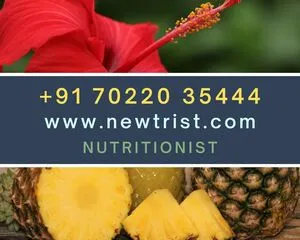
The DASH diet suits best for patients with hypertension. DASH diet contains foods rich in minerals like calcium, potassium, magnesium, and phosphorus which strive hard for reducing blood pressure levels.
- Following a healthy nutritious diet and maintaining a healthy weight can help in the management of hypertension and other related side effects.
- Regular physical exercises can do wonders in controlling your hypertension and overall health condition.
- Stress management is another smart way to tackle your hypertension. High levels of stress and anxiety can aggravate your health condition and worsen them.
- Yoga, meditation, and engaging in your favorite sport can make you free of emotional and work stress.
- Limit the intake of caffeinated drinks, and foods high in saturated fats, and added sugars.
- A survey reveals that about 70% of people over the age of 65 are hypertensive. Hypertension can increase the risk of stroke, cardiac disease, and heart attack.
Table of Contents
Best Diet Chart for Hypertension Patient
The best diet chart for Hypertension Patients should contain foods that are low in sodium and high in potassium and other essential minerals. The DASH diet for hypertension is flexible and easy to incorporate into the menu.
- Early morning drink @ 6:30 am: Cucumber drink
- Breakfast @ 9 am: Whole wheat toast with eggs and 1 banana
- Mid-morning meal @ 11 am: Turmeric-tomato soup
- Lunch @ 1 pm: Grilled chicken with sauteed vegetables and a cup of low-fat curd
- Evening snack @ 4 pm: One-third cup of unsalted pistachios
- Dinner @ 7 pm: Roti with mixed vegetable curry and Turmeric milk at bedtime
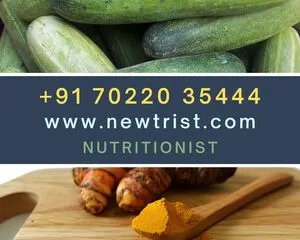
Cucumbers provide a lot of potassium which helps to excrete the excess sodium from the blood causing the blood pressure to drop. Cucumber drink also helps in removing toxins and hydrates your body.
Bananas provide the required energy, fiber, and potassium for the regulation of hypertension. The addition of tomatoes and turmeric to the diet helps in lowering hypertension and the risk of heart disease.
The body breaks down the protein in the chicken into peptides which lower hypertension. The protein found in the legs and breast of the chicken is rich in proteins and essential amino acids. The consumption of unsalted pistachios lowers blood cholesterol and blood pressure levels.
A combination of mixed vegetables provides a good source of vitamins, minerals, and fiber that is helpful in the reduction of blood cholesterol and triglyceride levels.
Hypertension patient diet chart
A hypertension patient’s diet chart must include foods low in saturated and trans fats and plenty of fiber, essential vitamins, and minerals like calcium, potassium, magnesium, and zinc. The DASH diet is mostly the preferred diet for hypertension as it includes more healthy foods rather than salty and oily foods.
Dietary modifications and lifestyle changes help to control hypertension. A diet rich in soluble fiber and complex carbohydrates can be beneficial for hypertensive patients.
- Early morning drink @ 6:30 am: Tomato juice
- Breakfast @ 9 am: Spinach idly with sambar and 1 boiled egg
- Mid-morning meal @ 11 am: Fruit salad topped with roasted pumpkin seeds
- Lunch @ 1 pm: Brown rice with dal and leafy greens and stir-fried broccoli
- Evening snack @ 4 pm: Mixed sprouts salad with crushed flaxseeds
- Dinner @ 7 pm: Multigrain roti with cottage cheese-capsicum sabzi
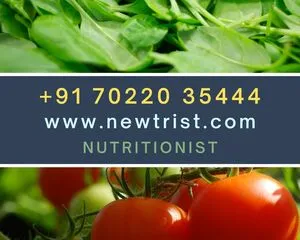
Avoid all forms of sodium in the diet such as MSG (Mono Sodium Glutamate), sodium bicarbonate, and iodized form of common salt. Try using herbs and spices to season foods instead of using normal salt. An increase in hypertension levels happens with increased salt intake.
The DASH diet excludes foods high in sodium, saturated fats, and added sugars. Changes in the diet can lower your hypertension levels in about a couple of weeks. The DASH diet allows 2300 mg of sodium as the recommended daily intake of sodium.
Talk with our expert nutritionists to know your daily dietary requirements and modifications. Our nutritionist customizes your diet making it easy to follow and improving your health conditions.
Hypertension diet plan
The hypertension diet plan consists mostly of plant-based foods such as whole grains, legumes, fresh vegetables, fruits, nuts, and seeds that contain good amounts of healthy fats.
- Early morning drink @ 6:30 am: Warm lemon water
- Breakfast @ 9 am: Steel-cut oats meal with chopped nuts and sliced banana
- Mid-morning meal @ 11 am: Tomato cucumber avocado salad
- Lunch @ 1 pm: Millet pulav with beetroot raita and ½ cup watermelon
- Evening snack @ 4 pm: Grilled corn fingers with green tea
- Dinner @ 7 pm: Jowar roti with potato-peas curry
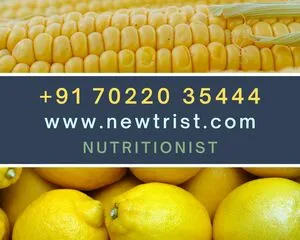
Hypertension menu plan
The hypertension menu plan consists of foods high in fiber, vitamins, and essential minerals to bring hypertension under control.
- Early morning drink @ 6:30 am: Pomegranate juice
- Breakfast @ 9 am: Aloo paratha with minty curd dip and orange
- Mid-morning meal @ 11 am: Tender coconut water with dry fruits
- Lunch @ 1 pm: Rice with red lentil curry and cluster beans sabzi and low-fat curd
- Evening snack @ 4 pm: Mixed sprouts salad
- Dinner @ 7 pm: Besan sooji cheela with green chutney
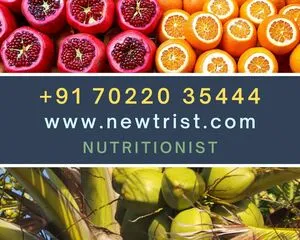
Excessive amounts of salt are found in processed meats and preserved foods. High salt intake has adverse effects on hypertension. Sodium nitrate is a commonly used preservative in meats like bacon and deli meats. These ingredients not only raise your blood pressure levels but also increases the risk of certain cancers and heart diseases. Fresh lean meat and freshwater fish can be the best choice for hypertension.
Cut back on sugars like fructose, sucrose, maple syrup, date sugar, brown sugar, fruit juice concentrates, brown sugar, and heavy fructose corn syrup.
Hydrogenated oils contain trans fats which may be dangerous for hypertension patients. Cakes, cookies, chips, crackers, pastries, and commercially available baked goods contain trans fats that have to be avoided.
Include more servings of vegetables and fruits in your diet. Opt for low-fat dairy products and lean meats and fatty fish. Healthy fats can be in the form of unsaturated fats present in avocados, olive oil, nuts, and seeds. Skip the intake of junk foods.
Diet for hypertension patient
Diet for Hypertension patients should consist of foods from various food groups. Making sudden changes can make it difficult for the body to adapt to the new form of diet. Substitute healthy foods instead of simple carbohydrates to maintain a healthy weight.
Include unsalted nuts, fat-free yogurt, air-popped popcorn (without butter), roasted makhana, and cut fruits for snacking in between meals instead of chips and sweets.
Many people aren’t aware of the quantity of food they eat. This is because of the distractions from the outside world like watching television, mobile phones, and chatting while eating. Practice mindful eating to know the calorie intake that you eat and drink every day.
- Early morning drink @ 6:30 am: Beetroot juice
- Breakfast @ 9 am: Avocado-cottage cheese sandwich with soaked walnuts
- Mid-morning meal @ 11 am: A bowl of diced cantaloupe
- Lunch @ 1 pm: Potato rice with lemon chicken
- Evening snack @ 4 pm: Air-popped popcorn with green tea
- Dinner @ 7 pm: Veggie-loaded spinach wrap
Pregnancy-induced hypertension diet plan
Pregnancy-induced hypertension diet plan should be planned accordingly so that the diet plan meets the needs of the expecting mother and growing fetus. During gestational hypertension, the blood pressure is greater than or equal to 140/90 mm Hg. Unhealthy food choices can lead to pregnancy-induced hypertension and hinder the growth of the baby.
- Early morning drink @ 6:30 am: Low-fat turmeric milk
- Breakfast @ 9 am: Foxtail millet-dal khichdi with vegetables with unsweetened fresh orange juice
- Mid-morning meal @ 11 am: Carrot-avocado-beet greens salad
- Lunch @ 1 pm: Brown rice with dal and amaranth greens, pumpkin sabzi, egg omelet, and low-fat curd
- Evening snack @ 4 pm: Fruit smoothie with soaked chia seeds
- Dinner @ 7 pm: Appam with mixed vegetable stew
Gestational hypertension diet
Gestational hypertension usually develops after 20 weeks of pregnancy which normalizes after childbirth. The diet of a pregnant woman should be calcium-rich and iron-rich and contain essential vitamins and minerals like folate and potassium for the regulation of gestational hypertension and healthy growth of the child.
Multiple pregnancies and IVF methods may be the reason for a woman to develop hypertension.
Choose potassium-rich fruits and high-fiber vegetables to be part of the gestational hypertension diet. steer clear of processed foods, salty, and sugary foods during pregnancy.
Reducing the salt intake to a minimum can help in lowering hypertension and also prevents fluid retention. Mild exercises like walking and swimming during pregnancy can keep your blood pressure under control. An active lifestyle keeps you away from the risk factors of hypertension.
Foods to consume to reduce hypertension
Foods to consume to reduce hypertension consist of green leafy vegetables, fruits, whole grains, freshwater fish rich in omega-3 fatty acids, unsalted nuts, seeds, eggs, lean meats, and low-fat dairy products.
Unsalted seeds such as flax seeds, chia seeds, pumpkin seeds, and sunflower seeds contain good amounts of magnesium that aid in the relaxation of blood vessels and lowers hypertension. top your oatmeal, salads, and yogurt with roasted/crushed/whole seeds to enjoy their benefits.
Adding more potassium-rich foods to the diet helps in removing excess sodium from the body and relaxes the walls of the blood vessels. Probiotic foods like curd (low-fat) serve to be good sources of calcium and help in the regulation of hypertension.
Opt for freshwater fish instead of sea fish to refrain from the salt content of sea waters. The omega-3 fatty acids promote heart health and safeguard from diseases. Polyphenol antioxidants improve the health of the blood vessels and maintain their elasticity.
Beans and legumes provide the necessary fiber and protein to keep blood pressure in check. These foods keep you satiated for long hours cutting down the cravings for unhealthy foods.
Hypertension diet food list
- Early morning drink @ 6:30 am: Tender coconut water
- Breakfast @ 9 am: Moong dal chillas with tomato chutney and 1 banana
- Mid-morning meal @ 11 am: A cup of cut papaya/pear/apple
- Lunch @ 1 pm: Chapati with lauki dal, beans curry, and buttermilk
- Evening snack @ 4 pm: Boiled channa sauteed with shallots and green chilies
- Dinner @ 7 pm: Paneer-egg roll with whole wheat roti
Fruits for hypertension
Fruits for hypertension include
- Apples
- Oranges
- Guava
- Pears
- Grapes
- Bananas
- Mangoes
- Kiwis
- Watermelon
- Cantaloupe
- Pomegranate
- Avocados
- Papaya
Fruits are excellent sources of vitamins, minerals, antioxidants, and fiber that help you manage your hypertension. Eat whole fruits instead of juicing them to avail the fiber content of fruits. Fruits are great for snacking between meals.
Oranges are rich in potassium. 100 gm of oranges contains 181 mg of potassium to keep hypertension under control. One can avail 358 mg of potassium from 100 gm of ripe bananas. Smoothies, milkshakes, toast, and some dishes can take bananas as their main ingredient.
Here are some of the fruits and their potassium content
| Fruits | Potassium content mg/100 gm of fruit |
| Avocado | 458 |
| Guava | 417 |
| Kiwi | 312 |
| Pomegranate | 236 |
| Orange | 181 |
| Tomato | 237 |
| Banana | 358 |
| Papaya (1/2) | 390 |
| Mango (1 medium) | 325 |
Vegetables for hypertension
Vegetables for hypertension include
- Beetroots
- Spinach
- Tomatoes
- Potatoes
- Carrots
- Broccoli
- Cucumbers
- Sweet potatoes
- Cabbage
- Green peas
- Mushrooms
- Pumpkin
- Ladies finger
- Brussels sprouts
Fresh vegetables are good choices of food to maintain health and reverse chronic illness. The addition of more servings of vegetables to the hypertension menu not only serves to be a good source of fiber and antioxidants but also lowers your hypertension levels.
Vegetables contain a naturally low sodium content and are high in minerals like calcium, potassium, and magnesium. The DASH diet emphasizes mainly vegetables to support healthy blood pressure.
Beetroot is high in nitrates which produce nitric oxide gas. This gas relaxes and dilates the blood vessels which increases blood circulation and lowers hypertension.
Carrots reduce the tension in the blood vessels and eradicate the effects of sodium. Carrots also reduce the risk of strokes and atherosclerosis.
Spinach, a widely used green, is a rich source of potassium, magnesium, and folate. Spinach is low in calories and high in fiber which can be incorporated in smoothies, tossed in salads, and sandwiches.
FAQs
Why Hypertension is called a “silent killer”?
Hypertension is often referred to as a “silent killer” as it is mostly asymptomatic. Diet for Hypertension helps in controlling high blood pressure and reduces the risk.
Hypertension is a condition where the blood flows at a greater force against the walls of the arteries. Hypertension can result from unhealthy food habits, stress, reduced sleep, and hereditary factors. Hypertension can be a major risk factor for many diseases like heart problems, kidney dysfunction, and other related ailments.
Normal blood pressure ranges between 120/80. If the BP rises above 140/90, it is considered high; if it rises above 180/110 it is severe. Hypertension can be analyzed with the help of blood pressure monitoring machines.
Consultation with your physician and regular check-ups can help you maintain a healthy range of blood pressure. Consultation with our expert nutritionists to help you follow the right eating patterns and guidance on avoiding certain foods that trigger blood pressure levels.
What are the symptoms of Hypertension?
Hypertension may show some symptoms like
· Severe headaches
· Nose bleeding
· Irregular heartbeat
· Chest pain
· Nervousness
· Sweating
· Tiredness
· Dizziness
Severe hypertension if untreated may lead to complications such as cardiac problems and stroke. Unhealthy eating habits, lack of physical exercise, obesity, and hereditary factors may result in Hypertension.
What is the therapeutic diet for Hypertension?
A therapeutic diet for Hypertension includes grains, fruits, vegetables, fat-free dairy, lean cuts of meat, nuts, seeds, and healthy fats. The therapeutic diet reduces hypertension and its effects on other body mechanisms. The therapeutic diet is the changes in the regular diet based on the nutritional needs of an individual.
A perfect therapeutic diet helps to restore and maintain the nutritional status, reduce sodium intake and modify the diet plan. A therapeutic diet helps in avoiding nutritional deficiencies due to the elimination of certain foods. Some of the foods may be avoided due to allergies or negative reactions.
The therapeutic diet also helps to reduce stress which helps in the maintenance of blood pressure. Reduced/zero consumption of saturated fats lowers blood pressure and promotes overall health. Avoid saturated fats from animal sources like fatty meats, butter, cheese, and full-fat dairy products. Grab the benefits of unsaturated fats from oils like olive oil, peanut oil, fatty fish, avocados, and nuts.
Is the DASH diet good for hypertension?
DASH diet is created with healthy ingredients to support the health of hypertension patients. It includes healthy eating habits with the inclusion of fresh fruits, vegetables, unsalted nuts, seeds, lean chicken, and fatty fish.
DASH diet contains foods rich in potassium, calcium, iron, and magnesium to flush out the excess sodium from the body.
Is the keto diet good for hypertension?
The Keto diet is good for hypertension because the body releases more insulin during ketosis. This helps in the reduction of inflammation and hypertension. The Keto diet also helps in weight loss and improves overall health. Maintaining healthy levels of blood pressure reduces the risk of heart disease and chronic illness.
Is the Mediterranean diet good for hypertension?
The Mediterranean diet improves cardiovascular health and reduces stiffness in the arteries which allows the free flow of blood through the blood vessels which results in reduced hypertension.
The Mediterranean diet also reduces the risk of obesity, diabetes, and high cholesterol which play a key role in increasing hypertension. The Mediterranean diet mostly involves fresh produce and healthy fats as the main source of energy.
Is avocado good for hypertension?
Avocados contain oleic acid that helps in regulating blood pressure and cholesterol levels. Avocados are rich in omega-3 fatty acids, folate, and potassium which help promote cardiac wellness and lower the risk factors of hypertension.
Avocados contain good amounts of fiber that aid in the maintenance of a healthy weight. Avocados are loaded with vitamins like A, B, E, and K, and potassium which can lower hypertension.
Is banana good for hypertension?
Bananas are extremely good for hypertension as they are excellent sources of potassium. One banana provides 422 mg of potassium which aids in alleviating hypertension.
Bananas are rich sources of soluble fiber that helps in maintaining a healthy immune system. Bananas are good sources of magnesium, antioxidants, and phytochemicals that are effective in controlling hypertension.
Is lemon good for hypertension?
Citrus fruits such as lemon have powerful effects in lowering hypertension. The plant compounds and vitamins present in lemons lower the risk factors for heart diseases like hypertension.
Lemon water can bring hypertension to normal levels immediately. Lemon water boosts immunity, improves digestion, and aids in the maintenance of hypertension. about 4-5 glasses of lemon water can keep you hydrated and your hypertension in control.
Is pomegranate good for hypertension?
Pomegranate consumption reduces systolic blood pressure. Pomegranate is known to reduce the effects of ACE (Angiotensin Converting Enzyme) activity which plays a main role in controlling hypertension.
ACE controls the size of the blood vessels which affects the levels of blood pressure. Pomegranates contain antioxidant polyphenols that reduce vascular inflammation which lowers hypertension.
Is watermelon good for hypertension?
Watermelon is rich in L-citrulline, lycopene, and potassium which support healthy blood pressure levels. Watermelons are sweet with no added sugars which makes them convenient to include in the diet.
The L-citrulline amino acid improves blood circulation and helps in lowering blood pressure levels. The L-citrulline gets converted into another amino acid which promotes the production of nitric oxide that helps in the relaxation of arteries.
What foods to avoid with pulmonary hypertension?
Pulmonary arterial hypertension (PAH) requires the restriction of foods high in sodium and salt. Include a wide variety of fruits, vegetables, whole grains, low-fat dairy products, beans, legumes, lean meat, and freshwater fish. Foods to avoid are
· Pickles, papad, and sauces
· Condiments and some seasonings
· Frozen foods
· Cheeses
· Processed foods
· Deli meats
· Fast foods
· Dried forms of fish and meats
· Processed cereals and white bread
What is the best diet for portal hypertension?
High-fiber fruits and vegetables, legumes, lean proteins like skinless chicken and turkey, and fish are the best diets for portal hypertension. Dietary changes and lifestyle modifications can improve your portal hypertension.
The portal vein carries blood from the stomach, pancreas, and other organs to the liver. The pressure exerted in the portal vein is called portal hypertension. Take good care of your liver and eat a healthy diet to avoid hepatitis and other infections that affects the liver.